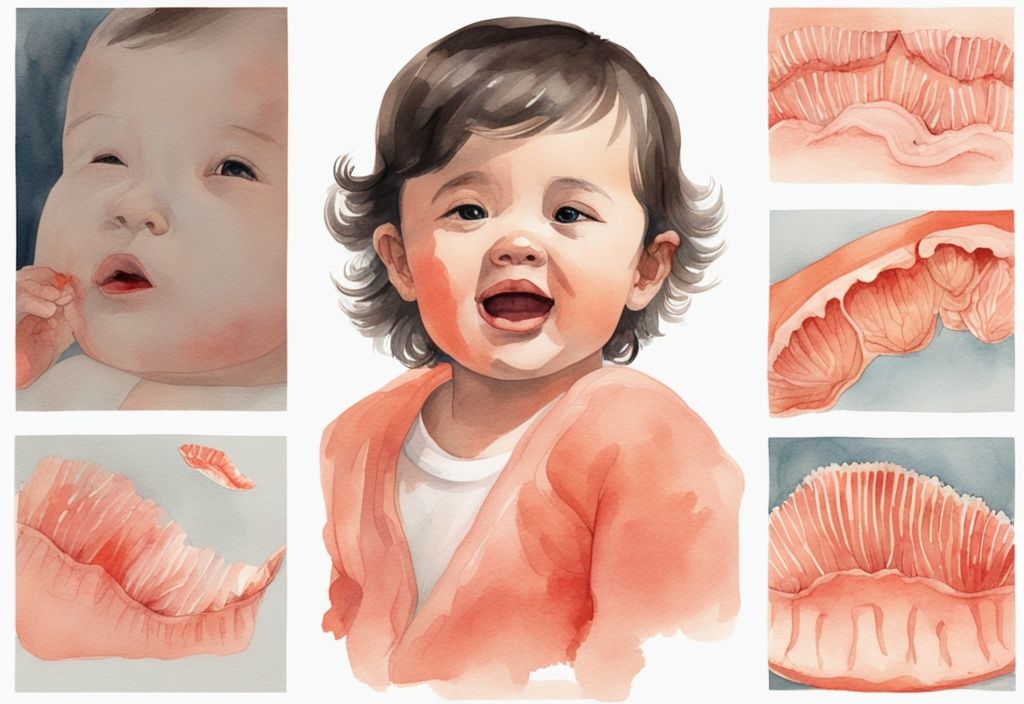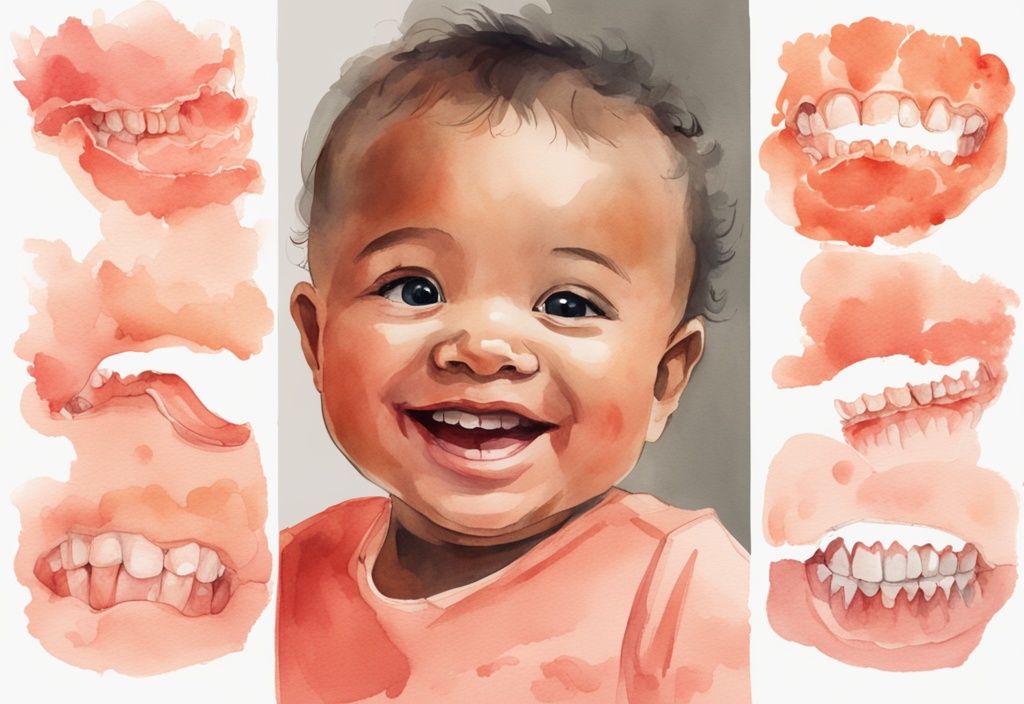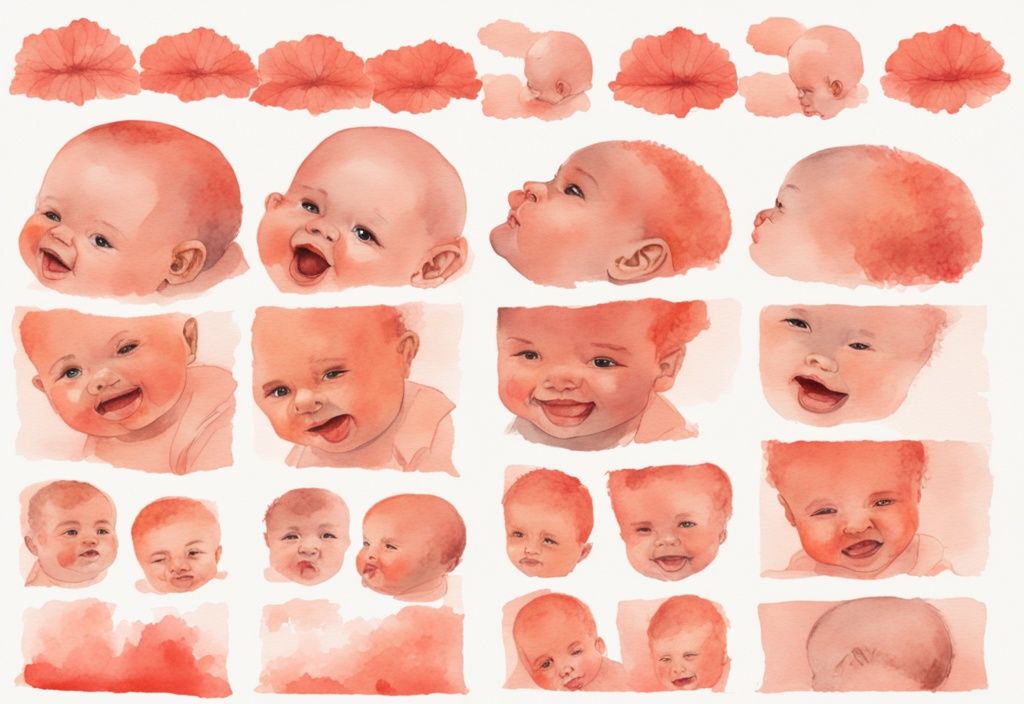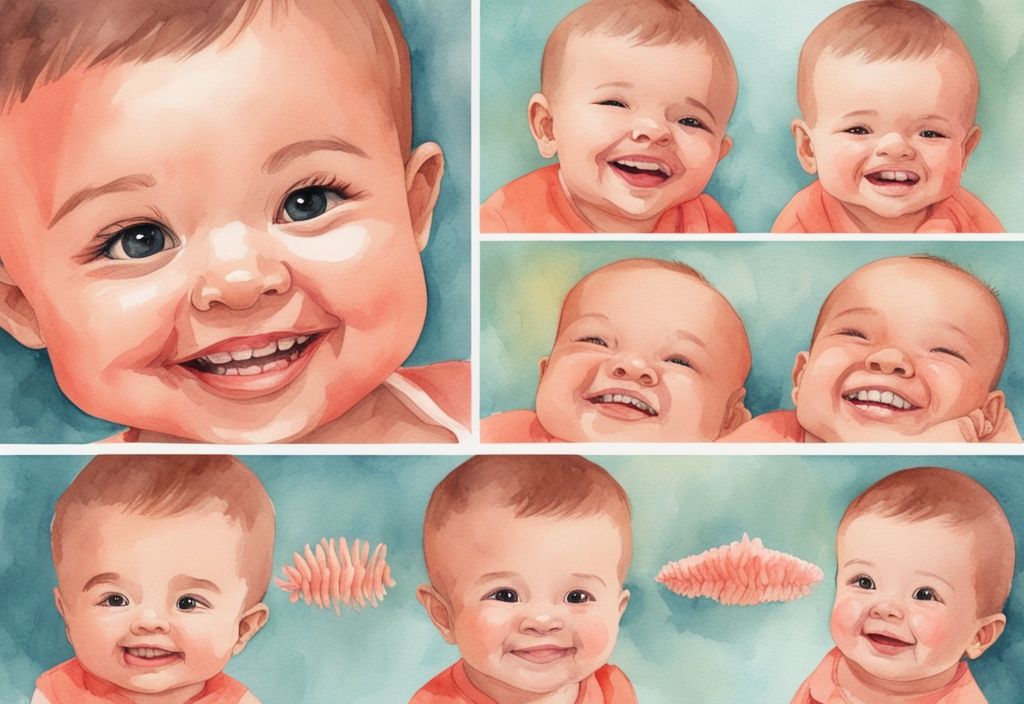Hey there, fellow parents! Have you noticed your little one’s adorable smile has a bit of an underbite? It’s a common worry for us parents, wondering if this will correct itself naturally. As a mom of two, I’ve been there and I’m here to share what I’ve learned.
In this article, we’ll explore the causes of baby underbites and discuss whether they can resolve on their own. We’ll also dive into the importance of early detection and effective treatments.
Remember, every child’s development is unique. So, let’s navigate this together and ensure our babies’ smiles stay as bright and joyful as ever. After all, there’s no challenge we can’t handle as parents, right?
Understanding Baby Underbites
Baby underbites can be a source of concern for many parents. This section will delve into what an underbite is, its causes in babies, and explore the pressing question: will a baby underbite go away? By understanding these aspects, parents can better address any worries they might have.
What is an Underbite?
Picture this: your little one flashes a gummy smile, and you notice that their lower front teeth sit a bit further out than their upper ones. That’s what we call an underbite, or in fancy terms, malocclusion. It’s when the lower jaw or teeth are more forward than the upper ones. Some babies are born with it, while others might develop it over time. You might find yourself asking, “Will a baby underbite go away?” Let’s explore this together, shall we?
Causes of Underbites in Babies
So, what causes these cute little underbites? Well, genetics often play the leading role. If you or your partner had an underbite, chances are your baby might too. But it’s not just about genes. Certain habits can make things a bit more complicated.
- Overusing pacifiers
- Thumb-sucking
- Prolonged bottle feeding
These common behaviors can contribute to underbite development. And let’s not forget about tongue thrusting—when the tongue pushes against the teeth while swallowing. It’s like a little nudge that can lead to this dental issue.
Now, if you’re wondering whether a baby underbite will go away, keep these factors in mind. They can significantly influence whether the underbite persists or corrects itself over time. Remember, understanding these causes can help you navigate this journey with a little more ease and confidence.
Can a Baby’s Underbite Correct Itself?
When you’re wondering, “will a baby underbite go away?” it’s important to look at several factors that can influence natural correction. Let’s dive into what might play a role in your little one’s journey towards a perfect smile.

Factors Influencing Natural Correction
First off, genetics can be a big player here. If there’s a family history of underbites, it might mean that your baby’s underbite is a bit more stubborn. But don’t worry—every baby is unique! Then there’s the role of certain habits. Thumb sucking, prolonged pacifier use, or extended bottle feeding can sometimes get in the way of natural correction. These habits might put pressure on the developing jaw, which could make the underbite stick around longer than we’d like.
Additionally, the growth pattern of your baby’s jaw is key. If the lower jaw decides to grow a bit faster than the upper one, it might make things tricky for natural alignment. But remember, this is all part of the adventure of watching your little one grow!
Examples of Self-Correcting Underbites
Now, let’s talk about those rare but hopeful instances where a baby’s underbite resolves on its own. As your child grows, their skull and jaw develop, which sometimes leads to a more balanced alignment. Mild underbites, in particular, have a knack for self-correcting as your child matures. It’s like a little surprise gift from nature!
Temporary underbites, often due to uneven jaw growth, might also adjust over time without any intervention. While these examples are encouraging, it’s super important to keep an eye on your child’s development. And hey, don’t hesitate to chat with a dental professional to make sure you’re on the right track for the best possible outcome.
Why Early Detection of Baby Underbite Matters
When it comes to our little ones, understanding if a baby underbite will go away naturally can be a real worry for us parents. Early detection is key in tackling this concern effectively.
Importance of Early Orthodontic Evaluation
Spotting an underbite early can make a world of difference in how we approach treatment and the chances of it correcting itself naturally. Regular dental check-ups are a must, starting from the moment that first tiny tooth makes its appearance, as early treatment, also known as interceptive treatment, can significantly benefit your child’s orthodontic journey, especially while some baby teeth are still present. You can learn more about the importance of timing in orthodontic treatment here. These visits give dental pros the chance to keep an eye on how your child’s jaw and teeth are developing, catching any signs of an underbite right from the get-go.
Jumping in early is super important because it can steer the growth of the jaw, possibly stopping the underbite from getting worse. By tackling the issue early on, orthodontists can use strategies that help the jaw align and develop properly. This hands-on approach can be crucial in figuring out if a baby underbite will go away on its own or if more treatment is needed. In many cases, catching it early and taking action can lead to a better outcome, reducing the need for more invasive procedures down the line.
Effective Treatments for Baby Underbites
When it comes to baby underbites, there are several effective treatments that can help guide your little one’s jaw and teeth into proper alignment. Understanding these options can provide peace of mind and assist in deciding the best path forward for your child.
Non-Surgical Treatments
Orthodontic Appliances
Let’s dive into the world of orthodontic appliances, which can be a gentle and non-invasive way to address baby underbites. These handy tools are like little helpers, guiding the growth of your child’s jaw and teeth into a more harmonious alignment. Early intervention is key here, as these appliances can shape the development of the jaw, potentially avoiding the need for surgery down the road.

Take the chin cap, for example. This nifty device gently nudges the lower jaw to grow in the right direction, helping balance your child’s adorable facial profile. Then there’s the upper jaw expander, which works its magic by gradually widening the upper jaw, creating more room for those tiny teeth to align properly and reducing the overlap of the lower teeth. And let’s not forget facemask therapy! This involves a device that gently pulls the upper jaw forward, aligning it with the lower jaw.
These treatments can be pivotal in determining whether a baby underbite will go away naturally or if further steps are needed. It’s like having a team of little helpers working to ensure your child’s smile is as bright and balanced as can be.
Myofunctional Therapy
Now, let’s chat about myofunctional therapy, a holistic approach that focuses on the oral habits contributing to misalignment. This therapy involves exercises and techniques designed to improve the function of the muscles in the mouth and face. It’s all about promoting better oral posture and function, which can be a game-changer for those pesky underbites.
By addressing habits like prolonged pacifier use or thumb-sucking, myofunctional therapy can play a crucial role in preventing further misalignment. Encouraging your little one to adopt healthier oral habits can significantly impact the development of their jaw and teeth, increasing the likelihood that a baby underbite will go away over time.
This approach not only helps in correcting existing issues but also fosters long-term oral health and development. It’s about setting your child up for a future with a strong, healthy smile.
Consequences of Ignoring a Baby’s Underbite
When it comes to your little one’s underbite, it’s easy to think, “Will a baby underbite go away on its own?” But ignoring it can lead to some unexpected challenges. Let’s dive into what might happen if an underbite is left untreated.
Impact on Eating and Speaking
Oh, the joys of watching your baby discover new foods! But an underbite can make this delightful journey a bit bumpy. When those tiny lower teeth jut out beyond the upper ones, chewing can become a tricky task. This might lead to some nutritional hiccups, as your little one struggles to munch properly. And let’s not forget about talking! The way teeth align is super important for forming sounds, so an underbite might make speech development a bit of a rollercoaster ride.
And here’s something you might not have thought about—sleep! Yes, a severe underbite can mess with your baby’s sleep because of jaw misalignment. This could lead to jaw pain and discomfort, which is no fun for anyone. Over time, this misalignment might even cause tooth decay or broken teeth, as the bite doesn’t spread out pressure evenly. It’s like trying to balance on a wobbly chair!

Social and Emotional Considerations
Now, let’s chat about the social side of things. As your child grows, they might start noticing how their smile looks compared to their friends. This awareness can sometimes lead to self-esteem issues, making them wish for a change. That’s why catching and addressing an underbite early can be such a game-changer.
As parents, we’re the cheerleaders, right? Offering patience and support during this journey can make all the difference. Helping your child navigate these emotional waters can prevent social challenges down the road. Early intervention can pave the way for a more positive experience, ensuring your little one feels confident and happy as they grow.
FAQ
At what age should I consult an orthodontist for my child’s underbite?
Hey there, fellow parent! If you’re wondering when to consult an orthodontist for your child’s underbite, aim for around age 7. That’s when those little jaws are still flexible, and early evaluation can really help. If the underbite doesn’t naturally improve, catching it early means you can explore corrective treatments. Think of it as guiding your child’s jaw development down the right path.
What are the risks of not treating a baby’s underbite?
Leaving a baby’s underbite untreated can lead to a few bumps in the road. It might cause eating and speaking difficulties, jaw pain, and even tooth decay. Plus, it can affect your child’s self-esteem and social interactions. But don’t worry, early treatment can swoop in like a superhero to prevent these issues, ensuring better oral health and a happier little one.
How can I prevent my baby’s underbite from worsening?
Okay, let’s talk prevention! To keep that underbite from getting worse, try to discourage prolonged pacifier use and thumb-sucking. I know, easier said than done, right? Also, keep up with good oral hygiene and schedule regular dental check-ups. And hey, consulting a specialist orthodontist is like having a trusty guide to help manage and correct the underbite effectively. You’ve got this!
Conclusion
Ah, the big question many parents have: “Will a baby underbite go away?” It’s a concern that tugs at our hearts, right? Well, the good news is that the long-term outlook for babies with underbites is often quite positive, especially when we catch it early. Some mild cases might just resolve on their own as your little one grows. Isn’t that a relief? But for those more stubborn underbites, early detection and intervention are key.
The main goal of any treatment is to make sure your child can eat and speak without any hiccups, while also giving their face and teeth a little aesthetic boost. Every child’s journey with an underbite is unique, and that means personalized treatment plans are the way to go. By tackling the issue head-on, you’re setting your child up for a future filled with optimal oral health and loads of confidence.
Remember, you’re not alone in this. We’re all in this parenting adventure together, and with a little patience and the right support, your child will be smiling brightly in no time!

